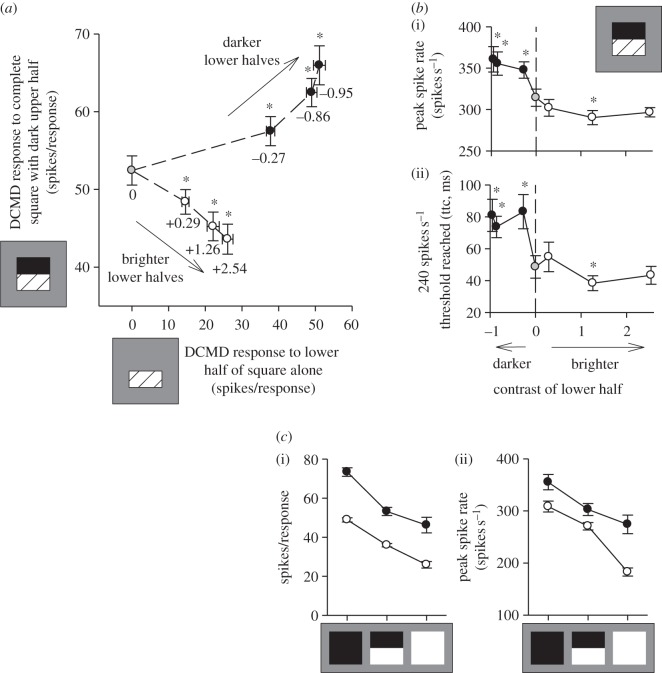Figure 1.
Motion dazzle in locusts. (a) DCMD spike numbers elicited by looming squares. Responses to squares with zero-contrast, indiscernible upper halves and lower halves of varying contrast are shown on the x-axis (lower half contrasts stated below data points). Darker-than-background (negative contrasts, black circles) and brighter-than-background lower halves (positive contrasts, open circles), both elicited increasingly strong DCMD responses as their degree of contrast against background increased. DCMD responses to looming squares with dark, −0.95 contrast upper halves and lower halves of varying contrast are shown on the y-axis. The response to such a square with a zero-contrast, indiscernible lower half (the response to the upper half alone, grey circle), was progressively augmented by dark lower halves of increasing contrast, but reduced by bright lower halves of increasing contrast. (b) DCMD peak spike rate (i) and the time to collision (ttc) at which a 240 spikes s−1 threshold was reached (ii), in response to looming squares with dark upper halves and lower halves of varying contrast. The DCMD response to the dark upper half alone (zero-contrast lower half; dashed lines and grey circles) was augmented by addition of a dark lower half (black circles), but reduced or unaffected by addition of a bright lower half (open circles). (c) DCMD spike number (i) and peak spike rate (ii), in response to looming squares with varying pattern and contrast. DCMD responses were weaker to low-contrast (−0.27 and +0.29, open circles) than high-contrast stimuli (−0.95 and +2.54, black circles). Bright/dark combination squares elicited weaker DCMD responses than dark squares, but generally stronger responses than bright squares. (a,b) Means ± s.e.m, n = 10 locusts; (c) means ± s.e.m, n = 9 locusts from a separate experiment. Asterisks: responses that differed significantly from that to the looming upper half alone (simple contrasts, p < 0.05).

